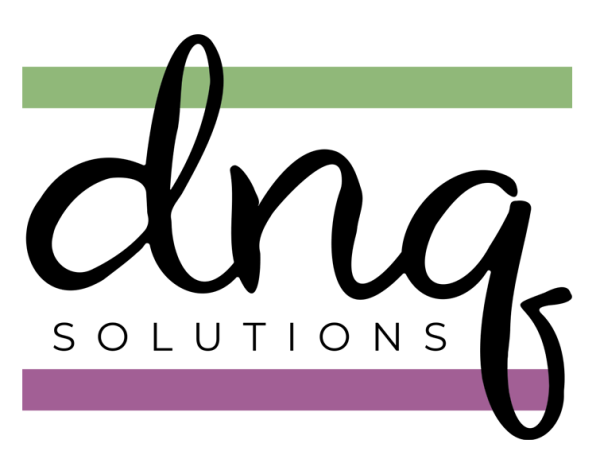
Do you ever think to yourself that you are bored, that you have nothing to do and no way to pass the time? I didn’t think so. We all have so many things to do. Things we want to do and things we don’t want to do. I even have things to do to keep me busy so I can avoid the things I’m supposed to do, how about you? When adults have free time available to them, they know how to fill it.
How much free time do you need?
Cassie Holmes in her book, Happier Hour, states that her research indicates that a person needs to have between 2 and 5 hours of free time a day to be happy. Time we can use as we wish. Less than 2 hours a day and a person can feel overwhelmed, and more than 5 hours of free time can make a person depressed.
Do you know how to play?
Gretchen Rubin in her book, Life in Five Senses, says “Research shows we get a real boost from play, with improved brain function, increased ability to generate ideas, and a better sense of humor and perspective.” In other words, having time to play is not only good for your mood but also good for your brain.
I love to play hooky. This is when I get to ditch my desk and get out to do something fun. Most everything I ditch my desk to do involves being outside in nature. The Atlanta Botanical Garden, the Island Ford National Park, and a plant nursery top my list as places to go. I also like to take my bike to a park and ride beside the river. If it’s super-hot, my favorite place to be is in the pool. I let my mind wander, to think what it will. Very often I come up with ideas of things to write about – new ways to say the same thing, or a new strategy for a client who is stuck.
Learning how to use free time starts at a very young age.
I remember when my two sons were very young, they would take their shovels and pails and do “stream work” (that’s what they called it) along the side of our driveway. We lived in a rural part of Connecticut. There was a ditch that ran along one side of the driveway. My boys loved to shovel out the leaves, sticks, and mud. They took any frogs or turtles they found down to our neighbor’s pond. This activity kept them busy for long periods of time.
The other thing that my children loved to do was build. They would construct buildings with wooden blocks and Legos. My boys called this their “town set-up”. Then they’d get out their Fisher Price Little People, cars and trucks and create a story. We left these set-ups on the floor in their playroom for as long as the town was in use. Eventually, it would be deconstructed, and put away, until they had another idea.
Often children don’t have very much free time available to fill. They go to preschool or daycare. Then there are after-school activities or sports. When they get home, it’s time to have a bath, dinner, and a bedtime story. At the weekends there may be more sports and/or playdates and parties.
If the children are home and nothing is planned, they sometimes complain they are bored. They have plenty of toys and games and yet, they are bored. Maybe they haven’t had an opportunity to learn how to entertain themselves.
The easiest thing for a parent to do is turn on the computer, i-pad, or television and let the children be entertained with electronics but that is not play in the sense that Gretchen Rubin is talking about.
Too many options make it hard to choose.
You probably know that it’s easier to decide when you don’t have too many options. When children’s playrooms are stuffed full of toys, games, books, and arts & crafts they often go from one thing to the next without truly engaging with the activity.
They will take out the toy, play with it for a few minutes, put it down, and then get something else out.
This creates two problems. First, the child is done playing in a short amount of time. Second, the things they got out will be mixed up together, making it difficult to put things away.
Limit the number of choices.
When I taught preschool, I had centers of activities for the children. Each center had only two choices.
Parents can limit the number of toys the children have available at any one time. Children love novelty (I do, too!). Put away most of the games and puzzles. This makes it easier for the children to engage in the activity. Rotate the games and puzzles once a week or every couple of weeks.
Create centers or zones.
A small bookcase and a cozy chair or big pillows make a great reading center.
Place a tub of building blocks and or Legos on the floor. Challenge the children to build something and then let them tell you about it.
A table and chairs in the family room may become the place to play board games, play with Play Doh, and do puzzles.
That may also be the place to play with coloring books and crayons.
Play alongside your children.
Being creative with free time may turn out to be a skill we need to teach our young children. We want to encourage their creativity and one way to do it is to play with them. Here are some ideas.
Have a family game night.
Important lessons are learned playing games together. They learn the rules for the game. And they learn that there is always a winner and a loser. Nothing bad happens to the loser and the winner doesn’t necessarily get a trophy. It’s just a game.
Build creations.
Save some of the empty boxes of cereal or from Amazon purchases. Get out the scissors, tape, glue, markers, paint, construction paper or whatever you have handy and make something.
Play outside.
Get out the sidewalk chalk and play hopscotch or draw a picture. Toss a ball, play soccer, or play tag. There are all kinds of fun things to do outside. When you get tired, flop down in the grass, and talk about the shapes of the clouds. Use your imagination.
Doing these things is as good for you as it is for your children.
The easiest way for anyone to use their free time is to turn to our electronics. I am suggesting that you use some of your free time to play. You can still draw outside with sidewalk chalk, color in coloring books, or sit in a cozy chair and read even if you don’t have children. It will be good for you to play.
For more tips like these subscribe to my newsletter or follow me on Facebook and Instagram
Diane N. Quintana is an ICD Master Trainer, Certified Professional Organizer in Chronic Disorganization, Certified Professional Organizer, owner of DNQ Solutions, LLC and co-owner of Release Repurpose Reorganize LLC based in Atlanta, Georgia. She specializes in working with people challenged by ADHD, Hoarding and chronic disorganization.


Great tips on encouraging play. It’s such an important thing for both children and adults to continue to play to be happy.
I love how you advocate for more free time to play or just be. Have you noticed how most people are engaging with their phones or other electronic devices when in a crowd? Standing in line, waiting, used to be a time for the mind to wander. But these days, so many of us have lost that art.
Recently, I returned from a long weekend at the beach. Aside from jumping the waves, I took a lot of time to sit, watch the waves and listen to the sounds of the sea. I didn’t feel compelled to do or accomplish anything. It felt great…restorative.
I love how you’ve laid out ways to minimize their options and create specific spaces so that they are not overwhelmed and can clearly see the possibilities. To me, it’s so much easier for kids to use free time in a delightful way than for adults, because we struggle with the fact that we know our “free” time is precious yet often yet so much less joy out of what we do than kids do. Imagination and play are so related that it can be hard to separate them. When I was a child, I spent most of my time imagining things. (I didn’t really like playing with dolls, but I liked thinking up “scripts” for what my dolls — and everyone ELSE’s dolls should say and do.) You couldn’t have paid me to go outside (trust me, my mom tried). As an adult, it seems the older we get, the fewer possibilities there are, so imagination can often feel foreclosed upon. Perhaps we adults need more guidance in knowing what to do with our free time, too? ;-)
That’s very interesting in limiting the choices. It makes such good sense to me. I know when I have too many choices, I sort of struggle to make a choice. But when I only have two or three, I can be very decisive. That’s an excellent point to keep in mind with children, and also with adults. Whenever I ask, “What do you want to watch?” it is hard to get an answer. But if I ask “Do you want to watch this or that?” I usually get a quick response.
Loved your stories about your boys when they were young. My boys did much the same things. Digging holes was especially fun.
Great tips on how to teach children how to have creative play.
I’m with you, Diane! Since I am indoors during work, I love going out into nature. If I only had a few minutes, my backyard would be my oasis. If I had a few hours, my bike and I would travel to a nearby trail.
I love that you mentioned limiting the number of choices. Kids need guidance to help make decisions. They will feel overwhelmed if they have too many options.